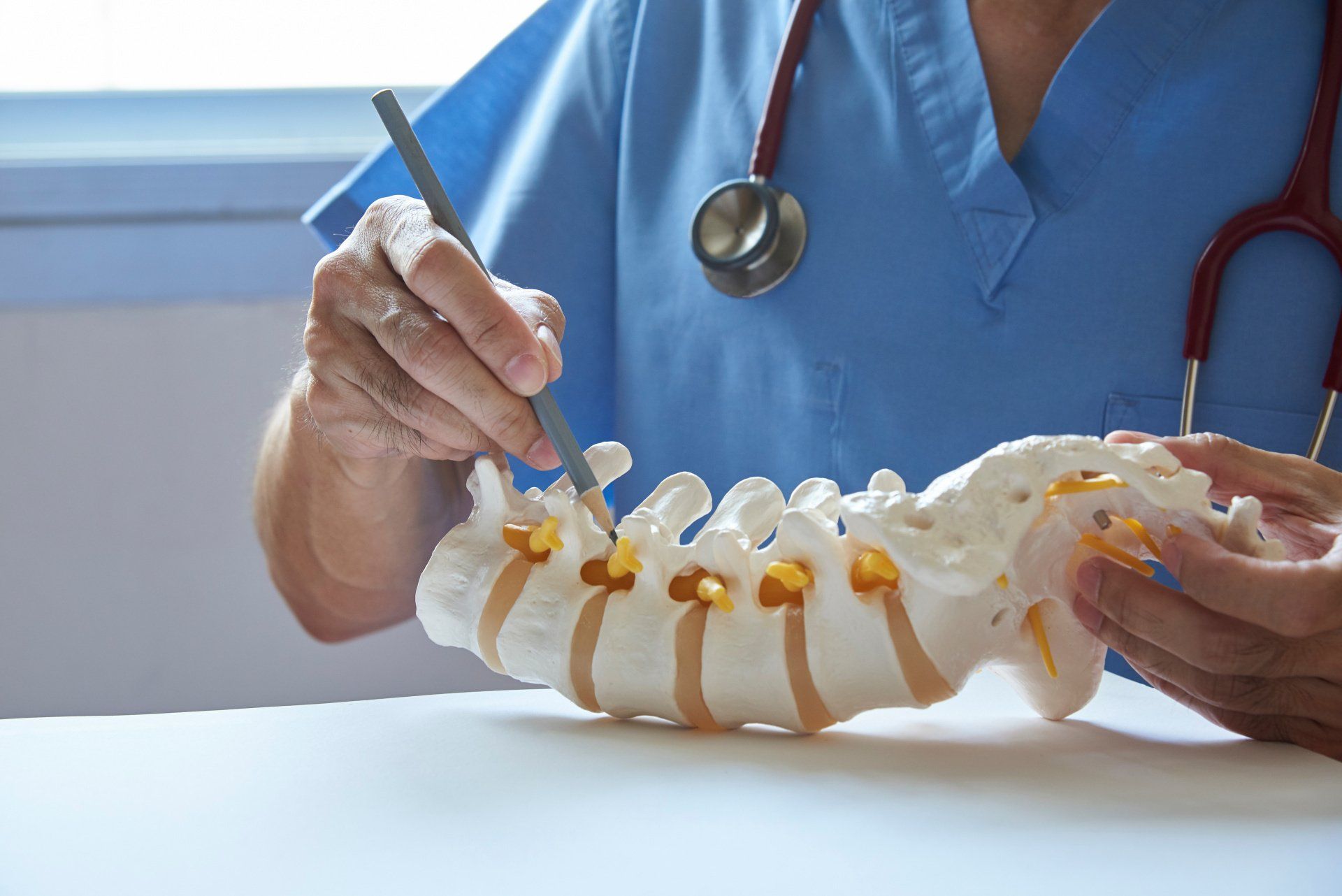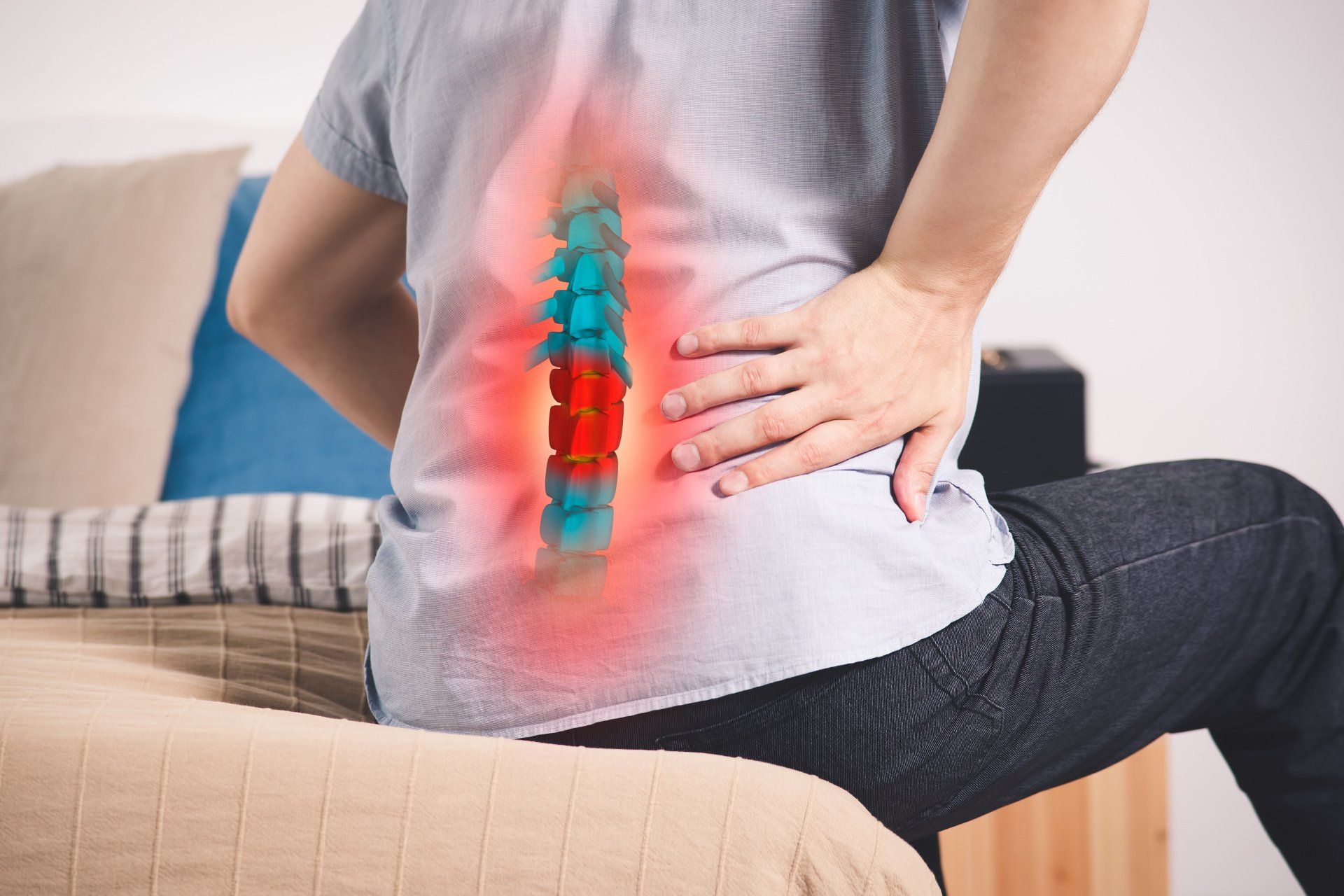Degenerative Disc Disease Treatment Options in Baton Rouge
What is Degenerative Disc Disease?
Degenerative disc disease is a painful condition that affects the discs between vertebrae. These spongy discs help absorb shock and allow for easy movement of the spine without discomfort. Over time, wear and tear on these discs can cause them to break down, leading to pain in the neck or low back as well as many other possible symptoms.
What Causes Degenerative Disc Disease?
Not all of the contributing factors for the development of degenerative disc disease are fully understood. While we know that the condition typically coincides with age and the loss of water and pliability within the discs, there are likely multiple other components as well. For instance, previous injury to the spine, family history of disc degeneration, and participating in activities like heavy weightlifting are all possible contributors. Unfortunately, spinal discs are one area of the body with limited blood supply, so once damage occurs, the discs are unable to repair and heal themselves in the way that other parts of the body could.
What are the Symptoms of Degenerative Disc Disease?
While degenerative disc disease may not cause serious complications or be diagnosed until later in life, it often begins when a person is in their 30s or 40s. In many cases, the condition causes no symptoms in the earliest stages. However, as disc degeneration progresses (most frequently in the neck or lower back), sufferers may begin to notice signs such as:
- Persistent pain in the affected area that can flare up and become worse
- Pain that increases with certain activities like twisting, bending, or lifting
- Pain that increases when seated or holding other positions for extended periods of time
- Pain that improves with position changes
- Feeling of instability in the spine
- Muscle spasms and pain that may be described as shooting, stabbing, radiating, or hot
- Tingling, numbness, and weakness in the extremities
How is Degenerative Disc Disease Diagnosed?
In order to arrive at a degenerative disc disease diagnosis, a physician must first gather information to help them better understand the patient’s risk factors and symptoms. This will typically be accomplished with the following steps:
- Medical History – A detailed medical history can help a doctor better understand a patient’s symptoms when they began, and any risk factors such as the previous injury that may be playing a role.
- Physical Exam – A physical examination will include palpation along the spine to feel for any abnormalities and tests for reflex and range of motion.
- Imaging – The imaging tests most commonly used to diagnose degenerative disc disease are MRIs. These tests can help doctors see signs of disc damage including dehydration, tears, fissures, or herniation.
How is Degenerative Disc Disease Treated?
Most of the treatment options for degenerative disc disease will focus on the improvement and management of symptoms. In the most severe cases, surgery may be warranted.
- Pain Management – Pain management efforts for degenerative disc disease can include ice to reduce inflammation, heat to relax tense muscles, rest, and over-the-counter pain relievers. Prescription pain medication may occasionally be used for short-term pain relief.
- Epidural Steroid Injections – Injections of corticosteroids are frequently used to address areas of inflammation in the body.
Steroids injected around the spine can help relieve some of the most bothersome symptoms of degenerative disc disease.
- Physical Therapy – An orthopedic physical therapist can help patients strengthen, protect, and heal the spine by using targeted stretches and exercises to improve flexibility and muscle conditioning.
- Lifestyle Modifications – A healthy lifestyle can help minimize the progress and impact of degenerative disc disease. Factors such as adequate hydration, regular physical activity, and proper posture can all help protect the spine from future problems. Likewise, so can avoiding aggravating factors such as nicotine, excessive alcohol consumption, and being overweight.
- Surgery– If non-surgical treatment methods have been tried for an extended period of time without success, surgery may be a logical next step. Degenerative disc disease may be treated through
spinal fusion of two or more vertebrae or replacement of the damaged disc with an artificial one. A spine surgeon can help you better understand each of these options and if either of them may be a viable option for you.
Degenerative Disc Disease Specialists in Baton Rouge
RELATED READING





